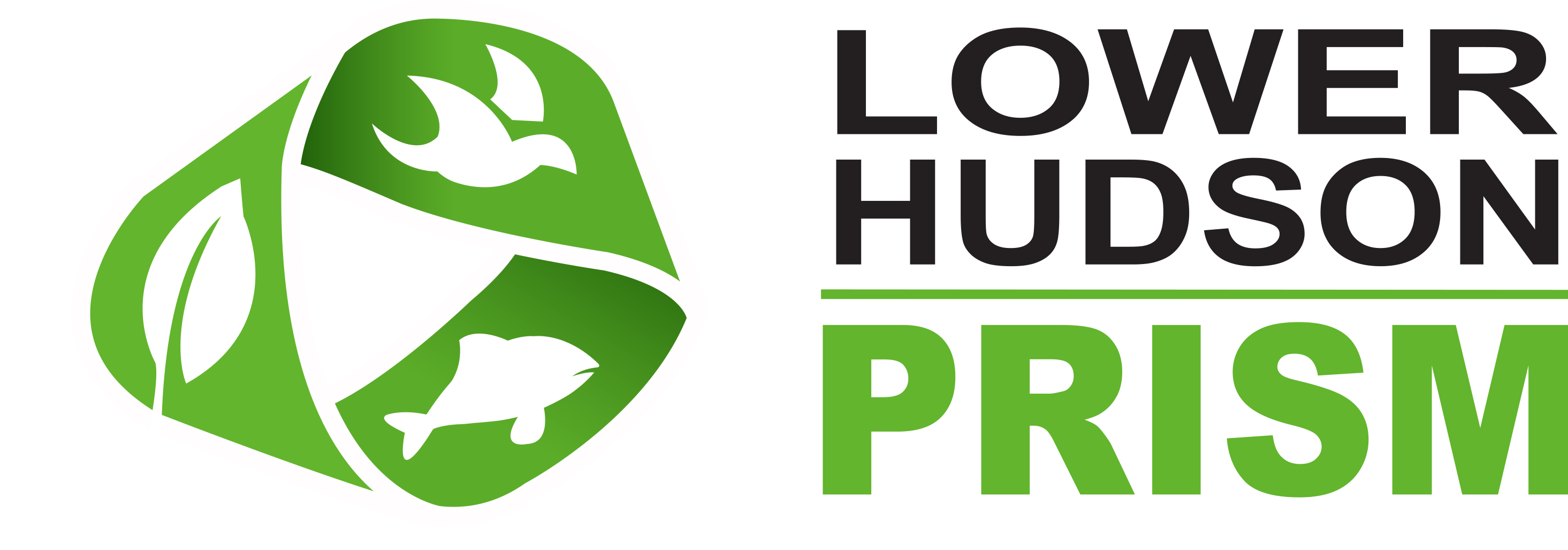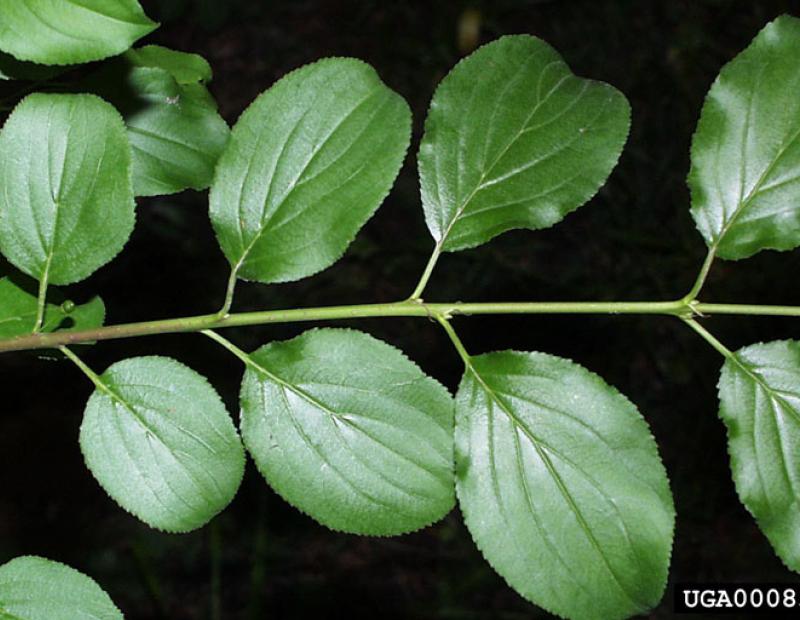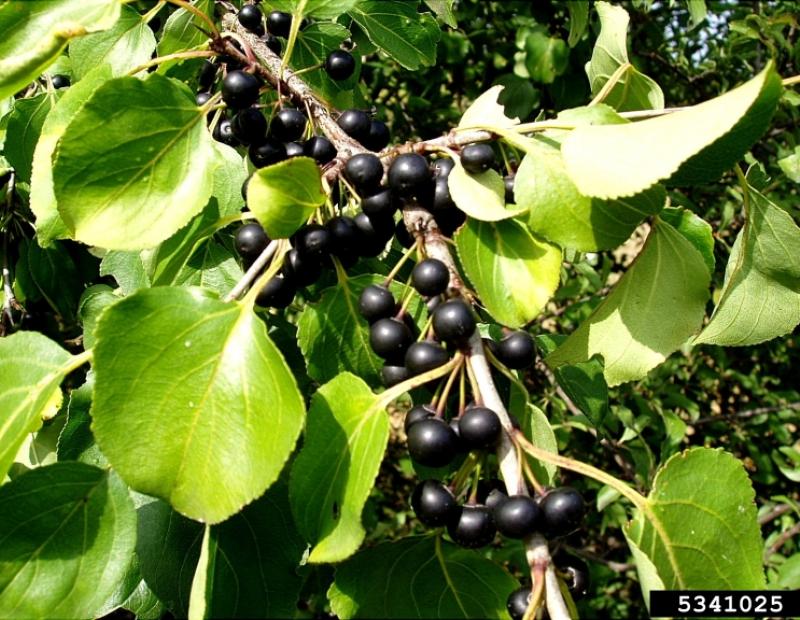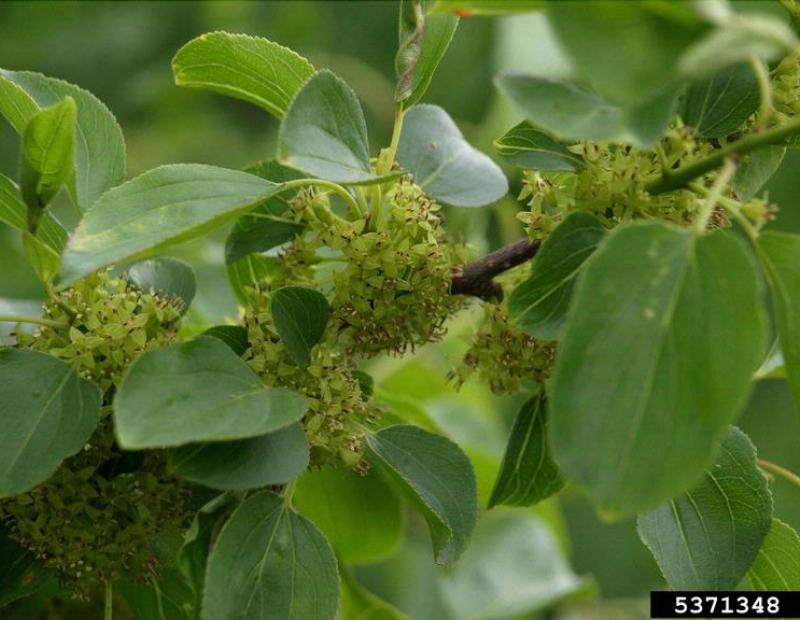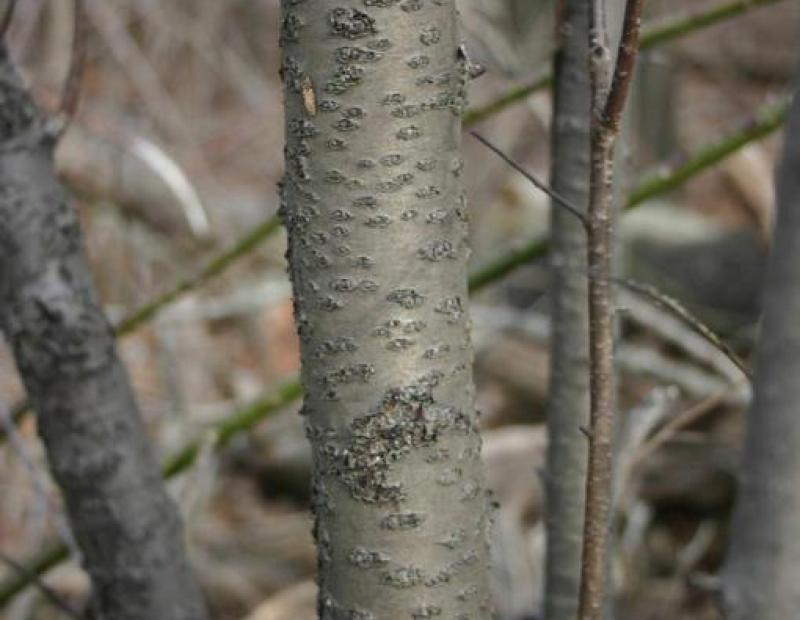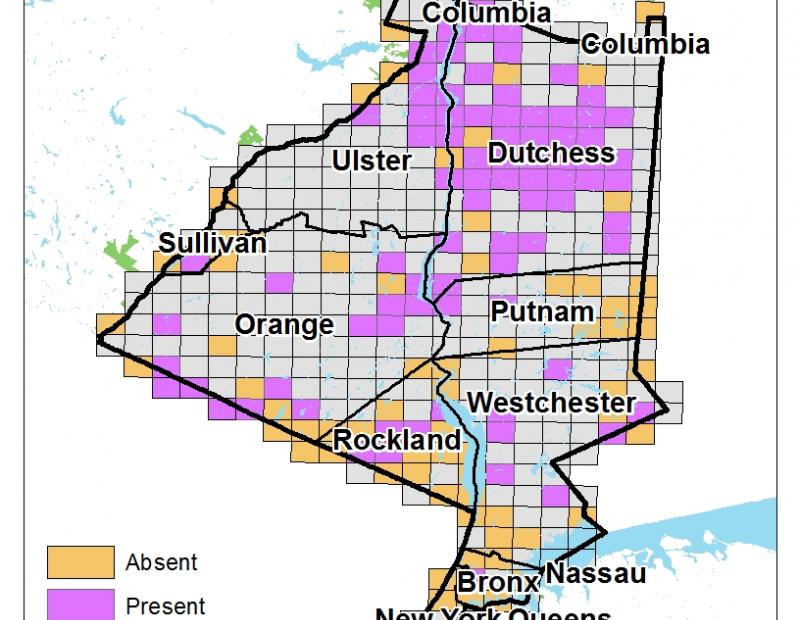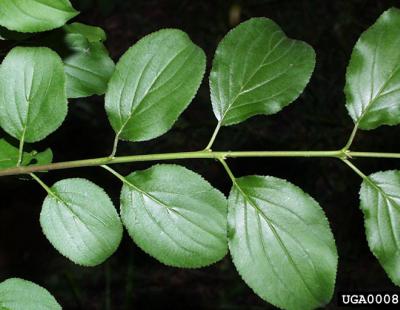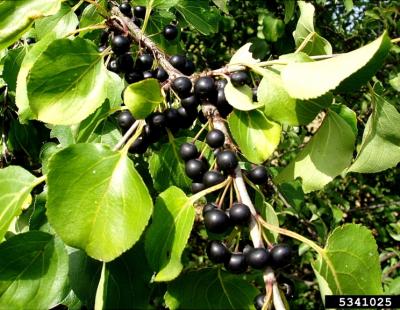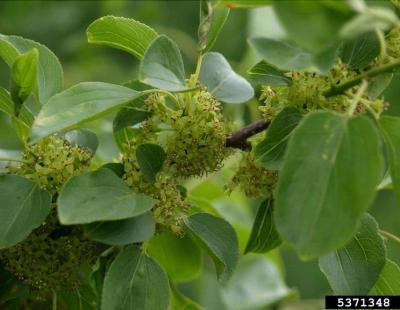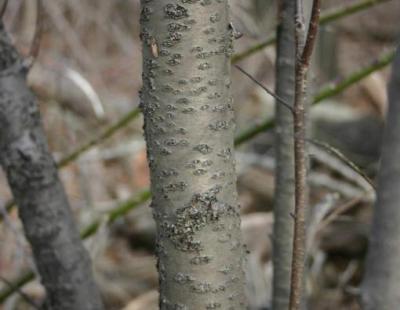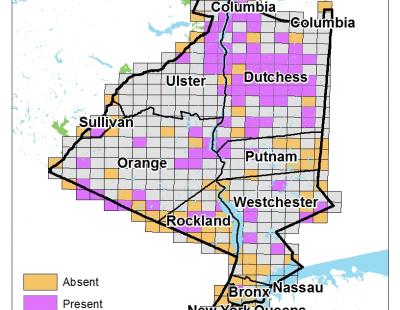Vertical Tabs
Common buckthorn is a member of the Buckthorn family (Rhamnaceae). It is a rangy, deciduous shrub with one or multiple stems growing 6-20 feet tall. The shrub is most easily identifiable by its hairless branches and stems, which are often tipped with a sharp spine. Conspicuous black, round fruits ripen in late summer through early fall. The leaves of common buckthorn are oval with serrate margins, and dark green above. The curved, lateral leaf veins are prominent (usually 3-5 pairs arcing towards tip) (5) Flowers are four-petaled, yellowish-white, fragrant and present in clusters of 2-6 near the leaf bases. Flowering occurs in April- May in the Hudson Valley, as the species’ new leaves are still expanding. (5) Common buckthorn fruits are fleshy, round and approximately ¼ inch in diameter. Fruits turn from green to black throughout the course of summer into fall and are found in clusters close to the stem. (5)
A quick growing shrub belonging to the Rhamnaceae family, common buckthorn is a prolific fruit producer and is dispersed long distances by mammals and birds. The species spreads locally forming dense, monotypic thickets and outcompeting other native plants. Secondary compounds produced by common buckthorn may provide protection against herbivory and limit the germination and growth of other plants occupying the same habitat. Furthermore, evidence suggests this species causes substantial changes to leaf litter and soil nitrogen, possibly laying the groundwork for earthworm invasion. (2)
Biological Control
There is currently no single optimal biological control agent in use against this species. (3)
Manual or Mechanical Control
Pulling / Digging Up: Pulling by hand or via a weed wrench is an effective method of control for seedlings and smaller plants.
Mowing: Regular mowing, particularly in open areas will reduce or halt fruiting. Successive cuttings, at least 2 for at least 3 years, will reduce the size and density of common buckthorn infestations but will likely not eradicate it. (8)
Girdling: Larger stems may be girdled and re-sprouts clipped or sprayed as they emerge. (8)
Prescribed Fire: Fire will top kill the species and re-sprouting will occur. (3)
Prescribed Grazing: Common buckthorn may be browsed by deer, particularly in open environments, however, it is not a preferred species. The species is poisonous to some livestock, such as horses. (3)
Soil Tilling: Not advisable. Tilling will fragment roots and encourage re-sprouting. It will also expose more seeds for germination. (8)
Mulching: Not applicable
Solarization: Not applicable
Hot Foam Spray: Not applicable
Chemical Control
The pesticide application rates and usage herein are recommendations based on research and interviews with land managers. When considering the use of pesticides, it is your responsibility to fully understand the laws, regulations and best practices required to apply pesticides in a responsible manner. At times, the pest you seek to treat may not be on a pesticide label, requiring a 2ee exemption from NYSDEC. Always thoroughly read the label of any pesticide and consult the NYSDEC or a licensed pesticide applicator with questions.
Foliar Spray: A 2% solution of glyphosate or triclopyr is effective at managing small plants of common buckthorn, although repeat applications may be necessary. Infestations managed in this way should be revisited in 2-3 weeks to monitor for regrowth. Always read and follow all instructions on the herbicide label. (9)
Cut Stump: A 50% solution of glyphosate or triclopyr is effective at managing larger plants when applied in the late summer or fall. (9)
Basal Bark: A 30% solution of triclopyr in oil is effective on smaller shrubs (i.e. less than 6 inches in diameter) when applied between midsummer and December. (9)
Hack-And-Squirt
Stem Injection: Not applicable
Pre-Emergent Spray: Not applicable
General management overview and recommendation
As with any other invasive infestation complex, large stands of common buckthorn are best managed via a combination of mechanical and chemical means. Small seedlings and plants can be hand pulled or removed using a weed wrench while larger shrubs must be cut and sprayed, either with a basal bark or cut stump application, to attain good control. All managed infestations should be monitored to ensure exhaustion of the seed bank for at least two years and to prevent reinvasion from nearby populations. Any new seedlings can be hand pulled or sprayed.
Post treatment monitoring
Any infestations managed by chemical means must be revisited in 2-3 weeks to check for treatment efficacy, unless the application occurred during dormancy, in which case, follow-up during the growing season will be necessary. Infestations managed solely by mechanical or physical means will need consistent follow up treatment to manage root suckers and sprouts. Due to the long-distance dispersal mechanisms of common buckthorn, managed infestations must be checked for reinvasion.
Disposal Methods
Waste material can be burned, chipped or composted so long as management was completed prior to seed set. Any fruit must be bagged and disposed of. All roots must be thoroughly dried and or crushed.
REFERENCES
- https://www.dec.ny.gov/docs/lands_forests_pdf/isprohibitedplants2.pdf
- https://pubag.nal.usda.gov/pubag/downloadPDF.xhtml?id=12709&content=PDF
- https://www.fs.fed.us/database/feis/plants/shrub/rhaspp/all.html
- https://www.eddmaps.org/ipane/ipanespecies/shrubs/rhamnus_cathartica.htm
- https://gobotany.newenglandwild.org/species/rhamnus/cathartica/
- https://www.agriculture.nh.gov/publications-forms/documents/common-buckt...
- https://www.cabi.org/isc/datasheet/46996
- https://cipwg.uconn.edu/buckthorns/
- https://mdc.mo.gov/trees-plants/problem-plant-control/invasive-plants/co...
